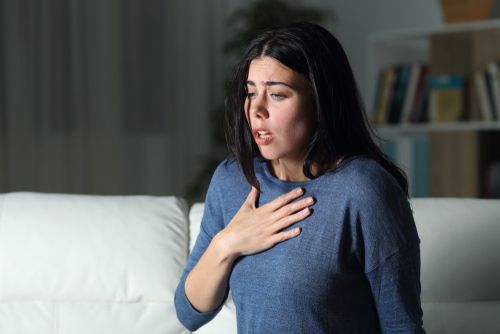 It may seem that anxiety is becoming more prevalent in society. This perception may simply be due to increased knowledge of the disorder, which makes it more recognizable. It may also be due to the general population's easier and more immediate access to unpleasant news or events in the world. The recent pandemic is also a likely factor in the increase of coverage that anxiety has received.
It may seem that anxiety is becoming more prevalent in society. This perception may simply be due to increased knowledge of the disorder, which makes it more recognizable. It may also be due to the general population's easier and more immediate access to unpleasant news or events in the world. The recent pandemic is also a likely factor in the increase of coverage that anxiety has received.
The actual rate of diagnosis, while it may fluctuate during certain periods, stays relatively constant over time. That rate is pretty high, though. Approximately one-third of the population will experience an anxiety disorder at some point in their lives. It's important for those who experience it to understand how to deal with anxiety on a daily basis.
Recognize the Symptoms
Most anxiety starts with feelings of restlessness or boredom or an uncharacteristic cynicism about the world. The first time you experience a panic attack, it can feel like a medical emergency. There are several physical symptoms to look out for:
- Increased heart rate
- Hyperventilation
- Shaking
- Unexplained gastrointestinal distress
- Sweating
- Fatigue
- Difficulty sleeping
Many people fear they are having a heart attack, as many of the symptoms are the same. Of course, you don't want to ignore them just in case they are a sign of something more immediately life-threatening, but if the EKG results come back clear, talk to your doctor about the possibility of anxiety.
Focus on Your Breathing
Breathing exercises can be helpful in calming anxiety, particularly if shortness of breath is one of the physical symptoms that you regularly experience. Your mind in panic mode makes you breathe more shallowly. By practicing deep breathing techniques, you can counteract the lightheadedness that often results from not getting all the oxygen you need.
Use Tactile Soothing
Calming sensory input can also ground you during an anxiety episode. List things you can see, feel, hear, smell and taste. Specifically, applying pressure to parts of your body for 30 seconds and then releasing it or giving yourself a hug is a good way to soothe yourself quickly. Small acts can make a big difference in the intensity of the physical symptoms of anxiety.
Reflect on Actual Circumstances
Anxiety is often the result of your perception conflicting with reality. For example, your heart may be racing as if you are taking on sniper fire, but you are not actually in any real danger. Sometimes, the reminder of what your true circumstances are is all you need to work through the panic attack. Byron Katie recommends addressing your reaction directly, starting with the question, "Is it true?" Once you distinguish between the lies your brain is telling you and your actual circumstances, you are more likely to regain some control over your physical reaction.
Talk to a Professional
All of these coping mechanisms are just examples of what you can learn in therapy with a mental health professional who understands the specific ways that anxiety manifests in your life. Not everything works for everybody, so finding someone who can guide you toward managing your anxiety effectively is important. If you don't know where to start your search, ask your pastor or another trusted spiritual leader for a referral. Keep in mind that the first therapist you meet with may not be a good fit, and try not to become discouraged if this happens. Getting the help you need is well worth the process it takes to do so.
Feeling anxious isn't fun, especially if it manifests in physical ways that trigger fear about health. The good news, though, is that it's a common enough experience that there are many resources that can help. Seek out a qualified therapist who can point you toward the practices that are likely to benefit you the most.